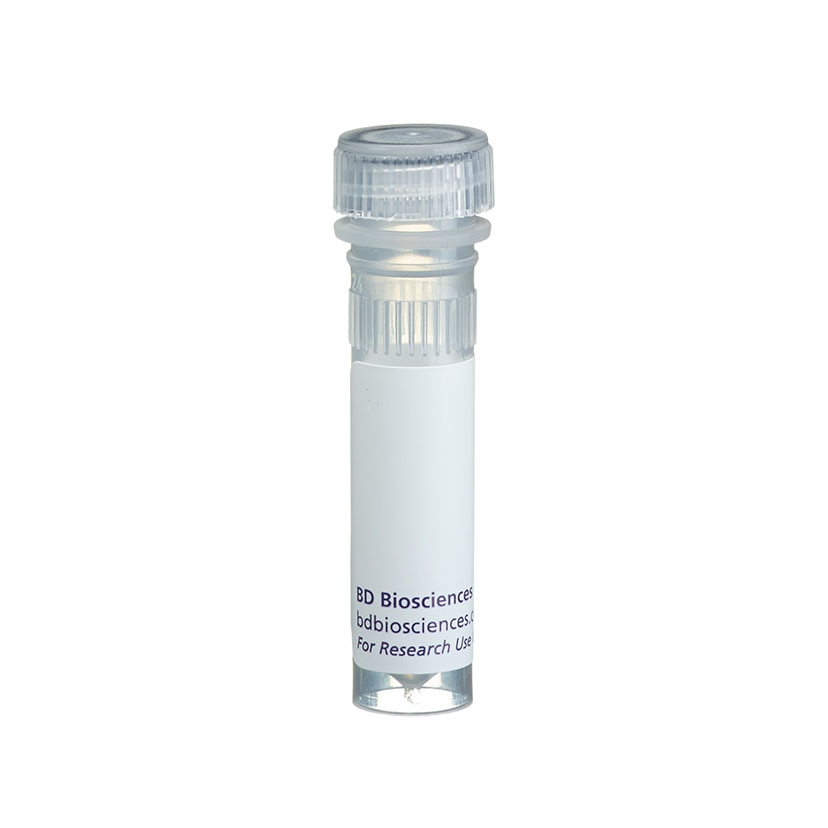Old Browser
This page has been recently translated and is available in French now.
Looks like you're visiting us from {countryName}.
Would you like to stay on the current country site or be switched to your country?


Regulatory Status Legend
Any use of products other than the permitted use without the express written authorization of Becton, Dickinson and Company is strictly prohibited.
Preparation And Storage
Product Notices
- Please refer to www.bdbiosciences.com/us/s/resources for technical protocols.
- Since applications vary, each investigator should titrate the reagent to obtain optimal results.
The MP6-XT22 antibody specifically binds to mouse Tumor Necrosis Factor (TNF, also known as TNF-α). TNF is produced by many activated cell types including monocytes, macrophages, astrocytes, granulocytes, mast cells, T and B lymphocytes, NK cells, keratinocytes, fibroblasts, adipocytes, and certain tumor cells. Activated cells express type II transmembrane TNF glycoproteins that associate as homotrimeric complexes. After enzymatic cleavage, the extracellular regions of membrane TNF are shed as soluble homotrimers. TNF is a potent multifunctional cytokine that can exert regulatory and cytotoxic effects on a wide range of normal lymphoid and non-lymphoid cells and tumor cells. Although TNF serves as a primary mediator in protective immune responses against microbial and viral pathogens, it can also drive systemic pathophysiologic responses including septic shock, cachexia and autoimmune diseases. Mouse TNF exerts its biological activities by binding and signaling through cell surface membrane Type I and Type II TNF Receptors (aka, TNFRI/CD120a and TNFRII/CD120b, respectively).
Development References (3)
-
Abrams JS, Roncarolo MG, Yssel H, Andersson U, Gleich GJ, Silver JE. Strategies of anti-cytokine monoclonal antibody development: immunoassay of IL-10 and IL-5 in clinical samples. Immunol Rev. 1992; 127:5-24. (Clone-specific: Blocking, ELISA). View Reference
-
Bitsaktsis C, Winslow G. Fatal recall responses mediated by CD8 T cells during intracellular bacterial challenge infection. J Immunol. 2006; 177(7):4644-4651. (Clone-specific: Blocking). View Reference
-
Yang J, Kawamura I, Zhu H, Mitsuyama M. Involvement of natural killer cells in nitric oxide production by spleen cells after stimulation with Mycobacterium bovis BCG. Study of the mechanism of the different abilities of viable and killed BCG. J Immunol. 1995; 155(12):5728-5735. (Clone-specific: Blocking). View Reference
Please refer to Support Documents for Quality Certificates
Global - Refer to manufacturer's instructions for use and related User Manuals and Technical data sheets before using this products as described
Comparisons, where applicable, are made against older BD Technology, manual methods or are general performance claims. Comparisons are not made against non-BD technologies, unless otherwise noted.
For Research Use Only. Not for use in diagnostic or therapeutic procedures.
Report a Site Issue
This form is intended to help us improve our website experience. For other support, please visit our Contact Us page.